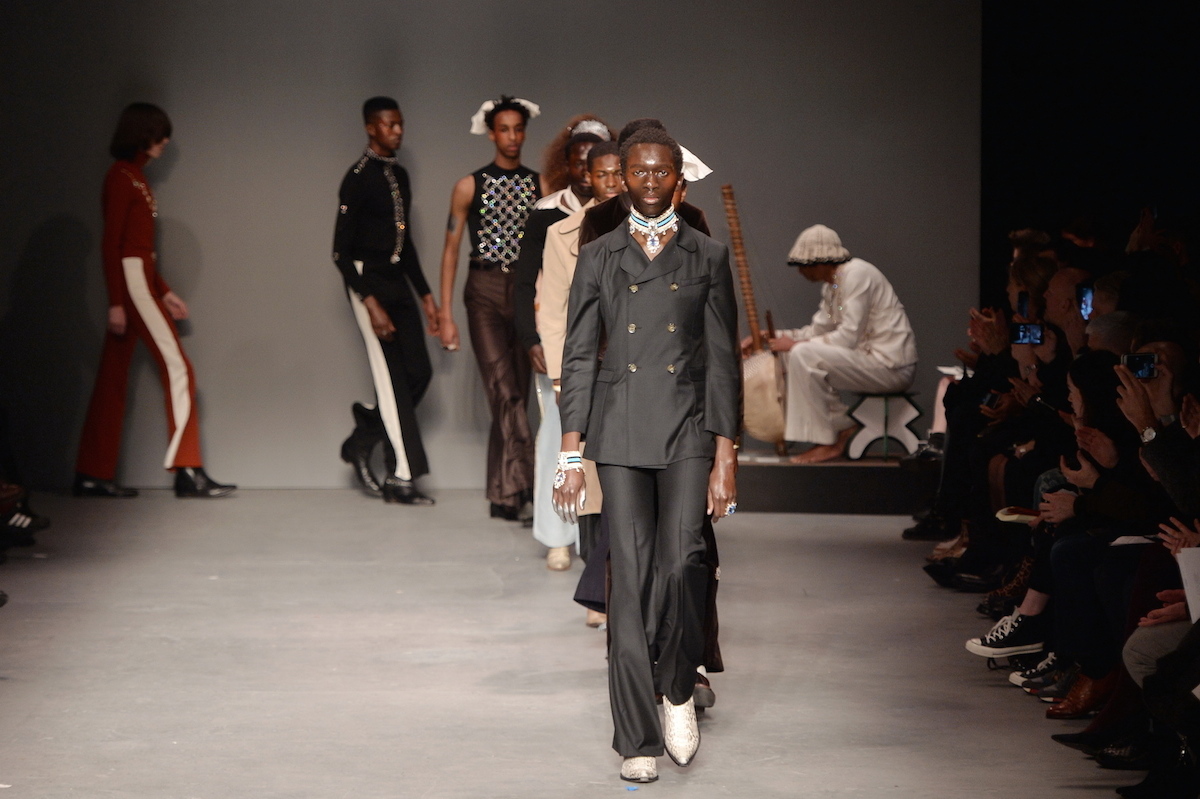Given that the intoxicating intimacy of her recent presentations within Fashion East’s menswear installations allowed her audience to lose themselves in her world, some questioned whether the blink-and-you-miss-it conveyor belt of the catwalk would work as a way of telling the next chapter in Grace Wales Bonner’s narrative.
However, as soon as the Nigerian-Irish composer Tunde Jegede tweaked the first string of his kora, the MAN audience knew they would be treated to a show to savour. Grace is an artist, ethnographer, poet, dreamer and academic, who chooses menswear as a medium to celebrate, confront and challenge cultural codes. There’s a softness and sensitivity to her work that draws you in. Her whispers echoed through every facet of the experience.
Through Tunde’s composition and role as griot – an African storyteller and praise singer — Grace controlled each strum and strut, dancing to her own beat she created a catwalk experience of her own. “Tunde was like a master of ceremonies,” the young designer told us backstage. “He kind of introduced the mood of that world. It was more about a ritual, a ceremony between them and him, it was about their world, not the observers.” We were transported deep inside her world once more. As each model strode on stage, they paused before the spectacle of Tunde, bowed and walked on. “I wanted the models to pay respect to the past, before walking into the future,” she explained. The show blended blended history with Afrofuturism, and choral Christian harmonies with Sun Ra, this sentiment was mirrored by the collection itself. Given that it’s a story to savour, i-D exclusively share the show soundtrack and discuss the past, present and future of Grace’s world.
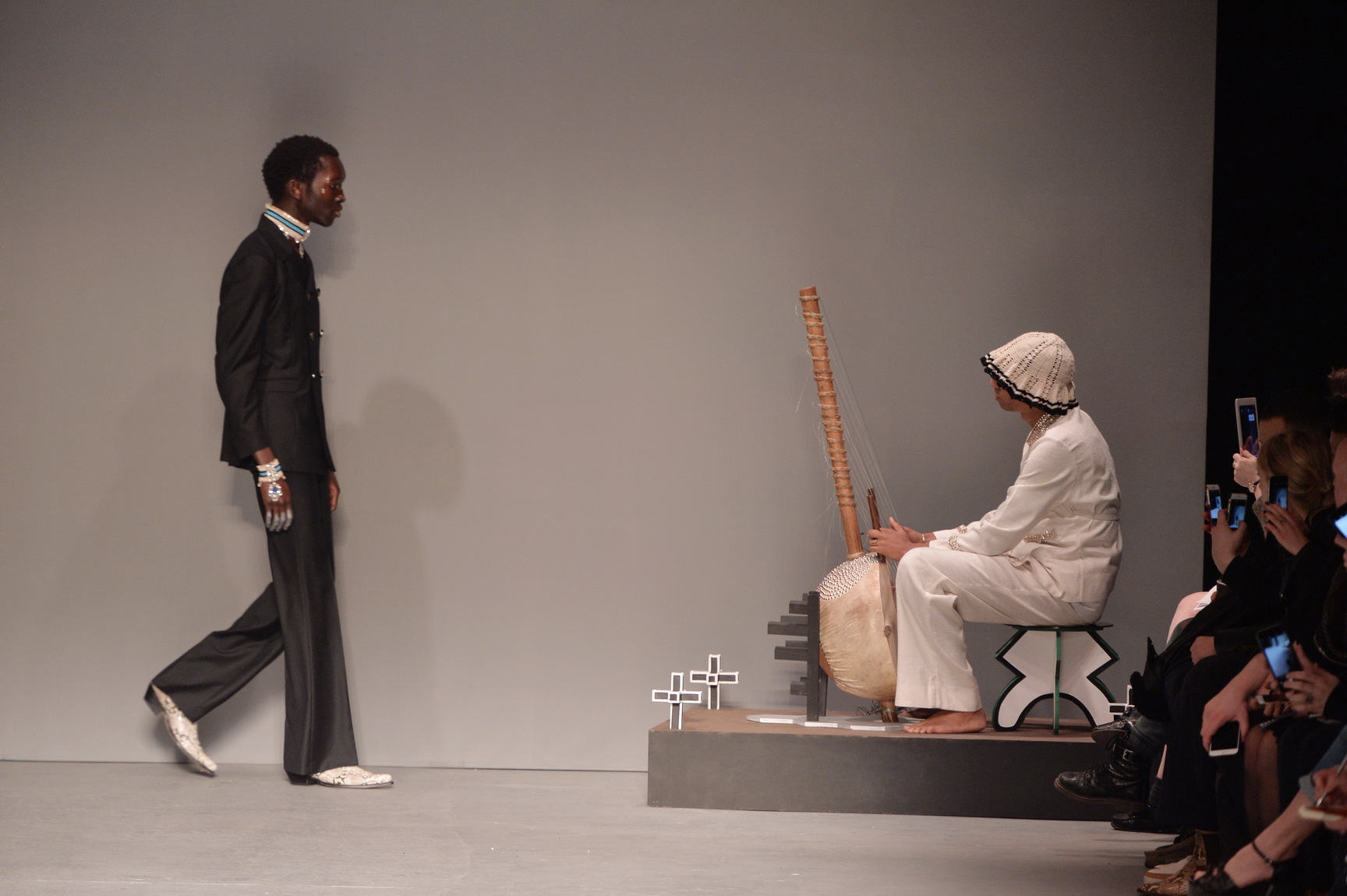
How important was the music in helping you make that transition from last season’s intimate ICA presentation? How conscious were you of ensuring your part of MAN felt like a Grace Wales Bonner experience, the venue becoming an extension of your world?
When I researched the kora and the role of traditional griots, the soundscape would activate a concentration, a reflection, drawing in focus. I feel like it helped focus the energy on the performance and make the world feel smaller and more inline with my vision. I wanted to try to keep the intimacy in the performance.
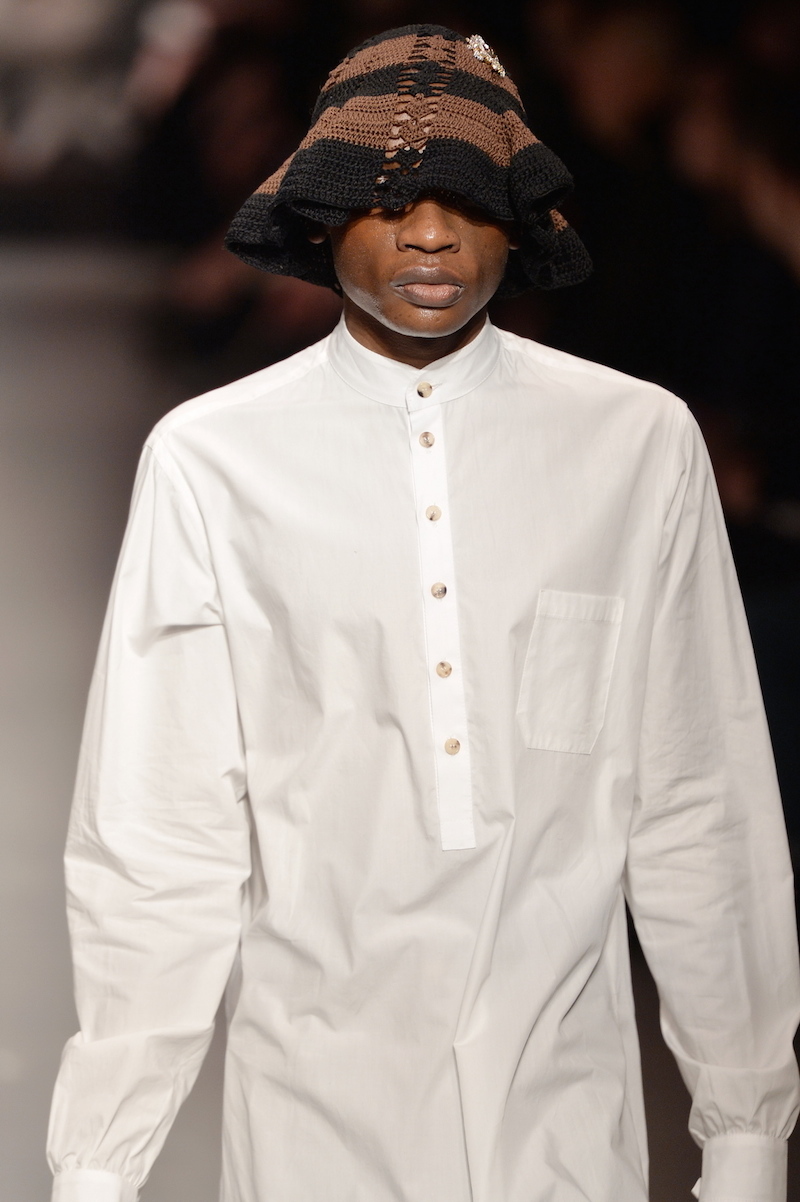
Could you tell us a little about Tunde Jegede? When did you first hear him? How and when did you start this collaboration? How involved were you in this piece, how loose was his brief?
I had seen Tunde’s work with the African Music Ensemble, I found him interesting as he plays both classical Western instruments and also the traditional 21 string kora. He is Nigerian/Irish and trained at Guildhall — I felt some similarities with his approach and the worlds he inhabits. Meeting and working with Tunde was humbling and inspiring. He encouraged me to extend my research to the traditional role of griots. I realised that griots were masters of ceremonies, they connect you to your ancestors and your history so he had an important role in the performance, he connected the boys to a lineage.
A griot is highly respected in traditional communities, I wanted there to be a genuine interaction, relationship and acknowledgement between the boys and Tunde. It was about them enacting this ritual, connecting to history and living in their own world. The music allowed that space for it to feel meditative, escapist.
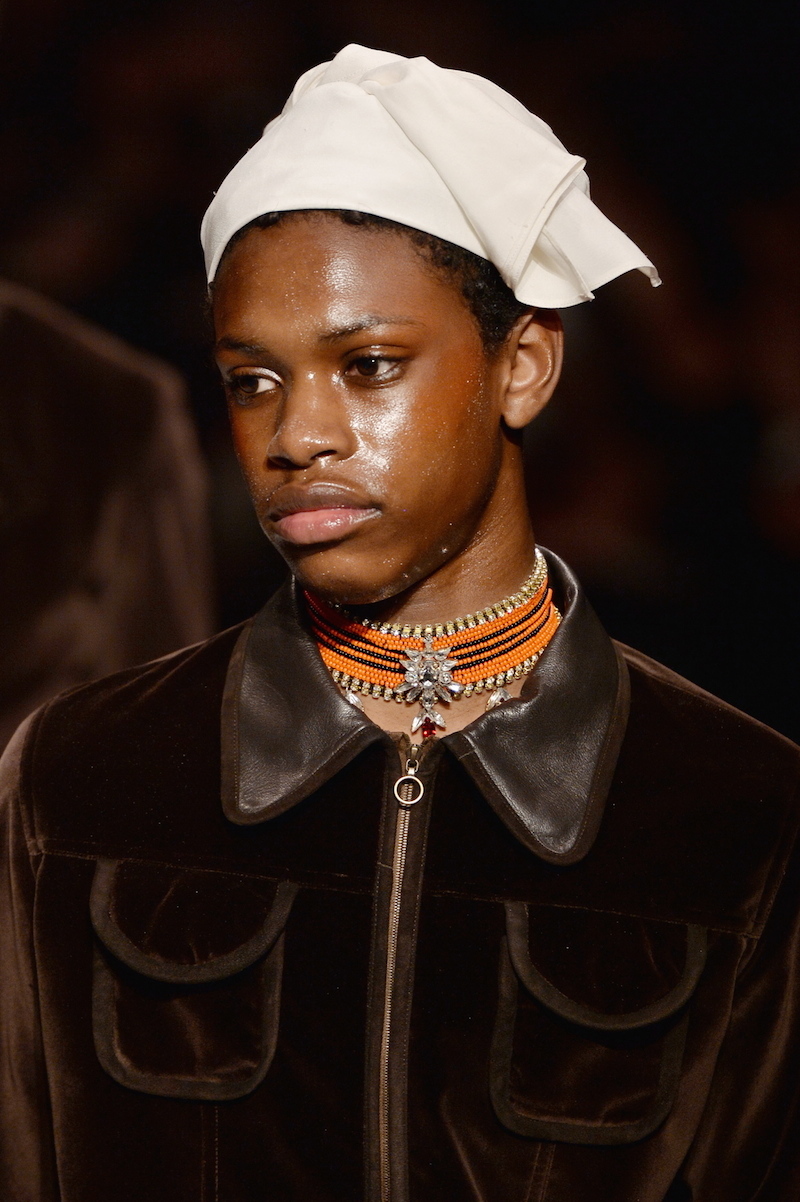
Across every facet of the collection and show experience (music included), this season is an exploration of spirituality. What sparked this desire?
The sounds and rhythms of Sun Ra were inspiring to me, this idea of ecstasy and escapism, refashioning or redefining your relationship with history. As my work has a strong connection to history I was interested in exploring new approaches to it, via Afrofuturism. In my research, I found something interesting in collective mechanisms of escape and ways to find freedom, as well as different ways of accessing spirituality. The sound of the kora encourages this kind of reflection, they were traditionally played to West African kings to compel them to reflect on their behaviour.
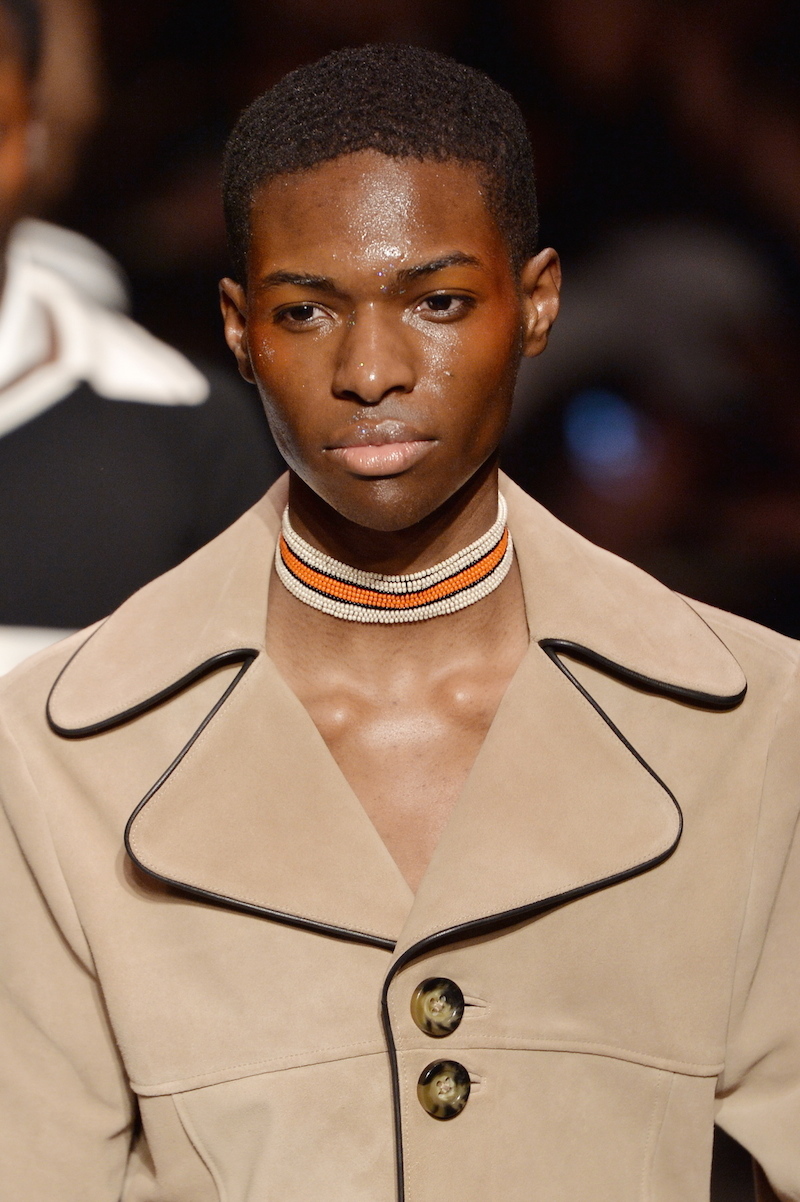
Could we talk a little about the evolution of your man and the casting? There were familiar faces but plenty of news ones too. What was the brief for Joyce NG?
When we were thinking about casting there were different characters we had in mind. There was a kind of pastor, and then there were musicians/performers that were fleeting from an intense performance off stage, and also hybrids of those.

Could you talk a little about your research for this season and share a little insight into what we can expect to see in your next zine?
Mark Leckey’s Little Richard, Sly and The Family Stone, Fanon’s writing on group behaviour, Baraka’s essay and poetry on Sun Ra. I like how he described him as “Far out… Way out. Gospel music, Spiritual jazz. Even the sky wasn’t the limit”, I loved Miles Davis quote on Sun Ra. I will continue to explore these in Everythings for Real III.
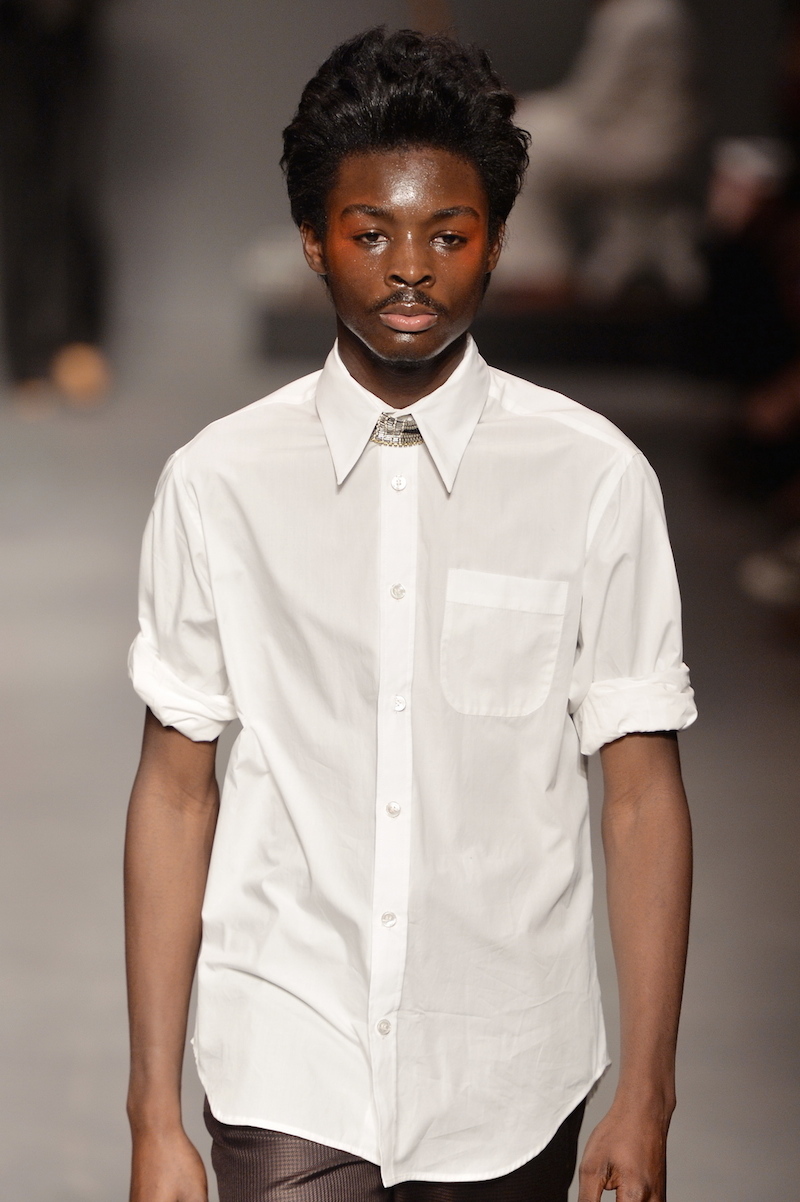
Finally, as the business grows so fast and your stage gets ever bigger, how conscious are you of growing at your own pace?
I want to take things slow, I have time – but sometimes I have to remind myself that. I have broad interests but everything I do I want to be considered in the same light, and I want it all to be a certain level — it’s all for real. I will be spending a month in Senegal with the Josef Albers Foundation later this year, those kind of projects are very important for me.
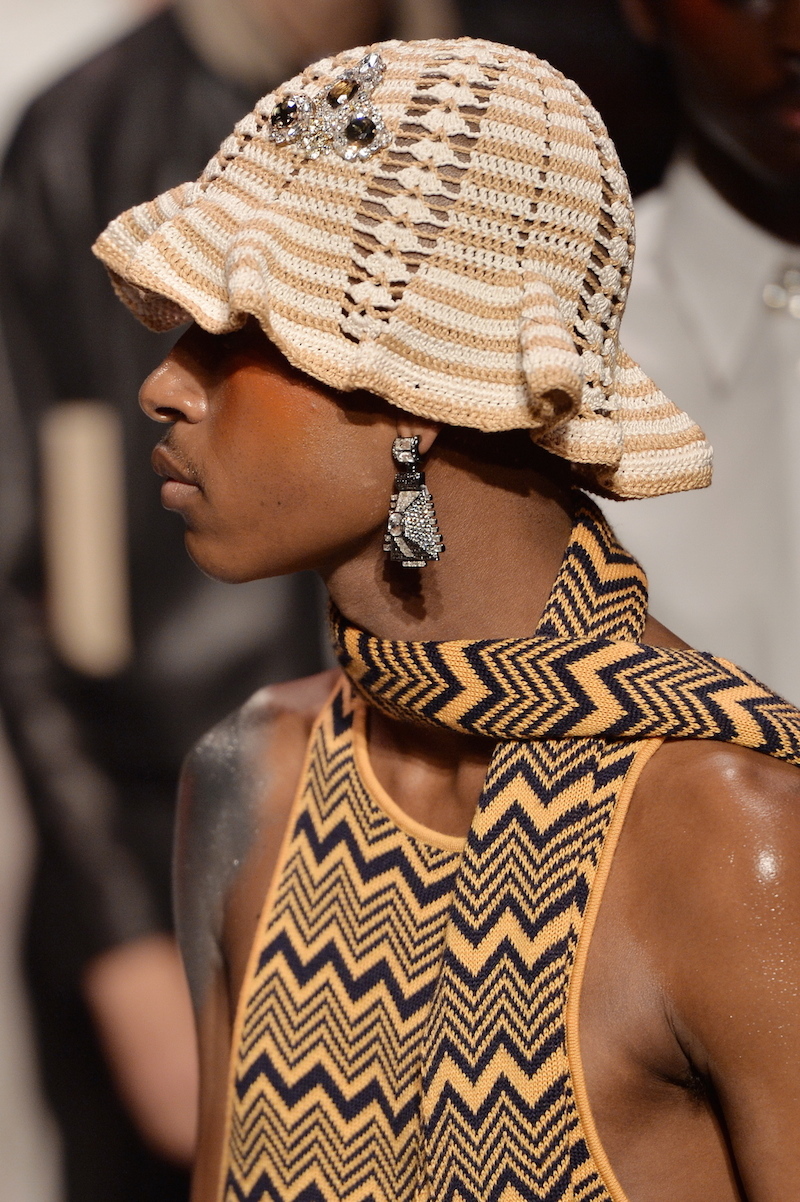
What have been your biggest lessons learned over the last twelve months?
Follow my instincts.
What excites you most about tomorrow?
The potential to learn and grow. Working with incredible artists and thinkers.
Credits
Text Steve Salter
Photography Mitchell Sams
